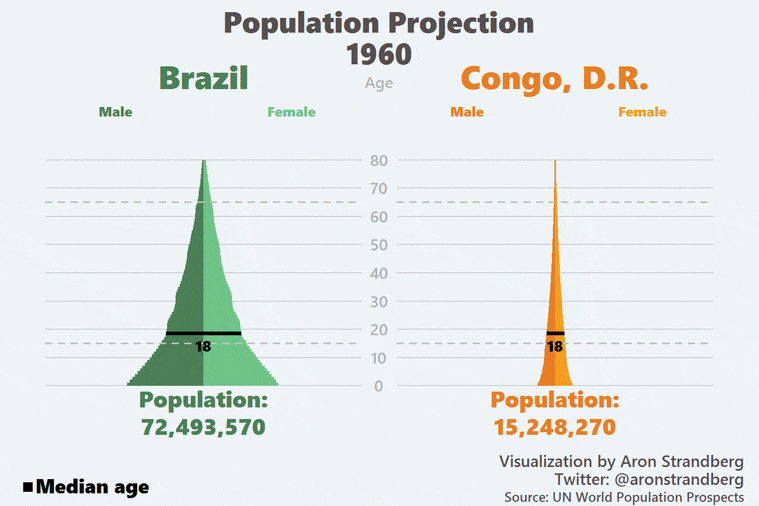By 2060, this country will have the world's largest population

The list of the world's most populous nations could look very different by 2060 Image: REUTERS/Bobby Yip

Get involved with our crowdsourced digital platform to deliver impact at scale
Stay up to date:
Youth Perspectives
In the 1950s the world looked very different. Data from the United Nations shows that the global population was around 2.5 billion. Today, that number is almost 7.5 billion and is expected to rise to 9.7 billion by 2050.
In the middle of the 20th Century, China was home to 500 million people and, like today, it was the world’s the most populous nation, followed by India and the United States.
But, based on current trends, the list of the world's most populous nations could look very different by 2060.
__________________________________________________________
Have you read?
Japan's population is shrinking: What does it mean for the economy?
These 2 maps will change the way you understand population
The world’s 10 youngest populations are all in Africa
__________________________________________________________
This animation, created by Aron Strandberg, uses UN data to show the population growth of the 12 most populous countries between 1950 and 2060.

Over the past half century, China has remained in the top spot, but it is expected to be overtaken by India in 2022.
In 2020, India is predicted to have over 1,383,000 million citizens, compared to China’s 1,402,000 million.
Just eight years later, India is set to have gained over 100 million people, while China’s population is only expected to have increased by 1.4 million.
There’s another country on the list that is growing rapidly - Nigeria.
In 1950, Nigeria had a population of around 37 million. By 2015, it was more than 182 million.
Nigeria, which has a high fertility rate and a large youth population, will continue to see rapid expansion, and is expected to overtake the US to become the third most populous nation by 2060.

Another interesting case is the Democratic Republic of Congo, which had a population of around 12 million in 1950. That figure is expected to reach 237 million by 2060.

The animation shows how the nation is projected to experience huge growth in its youth population.
By contrast, Brazil, consistently one of the world's most populous countries, will see its ageing population increase while overall numbers decline.
European countries including the UK, Germany and Italy were among the world’s most populous nations in the 1950s. Today, they no longer make the top 12. The animation also shows Russia, the fourth most populous country in 1950, disappearing from the list by 2040.
Don't miss any update on this topic
Create a free account and access your personalized content collection with our latest publications and analyses.
License and Republishing
World Economic Forum articles may be republished in accordance with the Creative Commons Attribution-NonCommercial-NoDerivatives 4.0 International Public License, and in accordance with our Terms of Use.
The views expressed in this article are those of the author alone and not the World Economic Forum.
Related topics:
The Agenda Weekly
A weekly update of the most important issues driving the global agenda
You can unsubscribe at any time using the link in our emails. For more details, review our privacy policy.
More on Youth PerspectivesSee all
Andrew Moose and Ruma Bhargava
April 5, 2024
Tomoko Fukuda and Andreas Daugaard Jørgensen
March 4, 2024
Simon Torkington
January 31, 2024
Catherine Russell
January 17, 2024
Natalie Pierce
January 13, 2024
Rena Kawasaki
December 20, 2023






